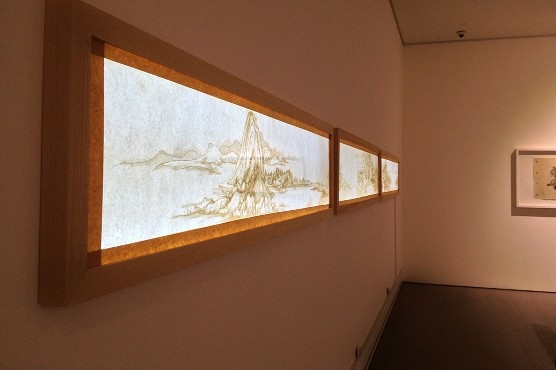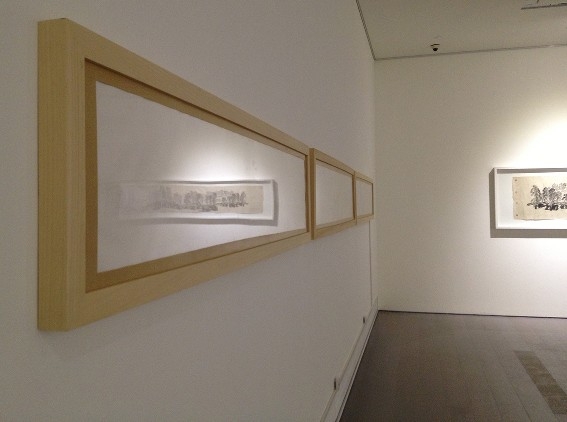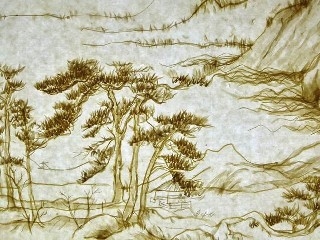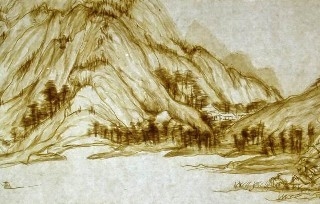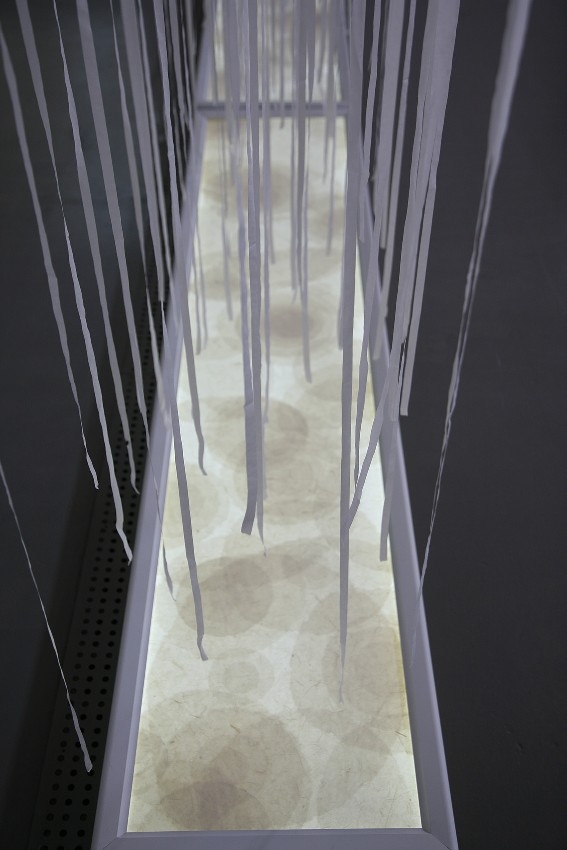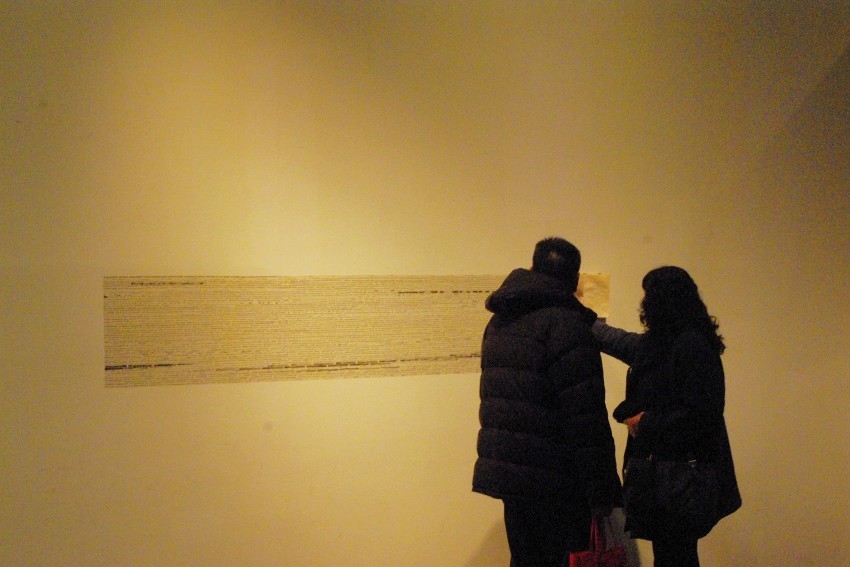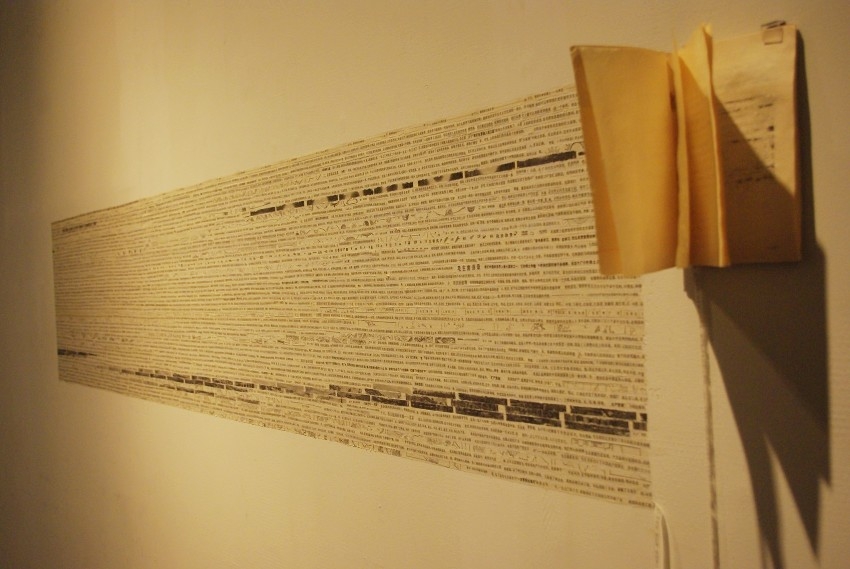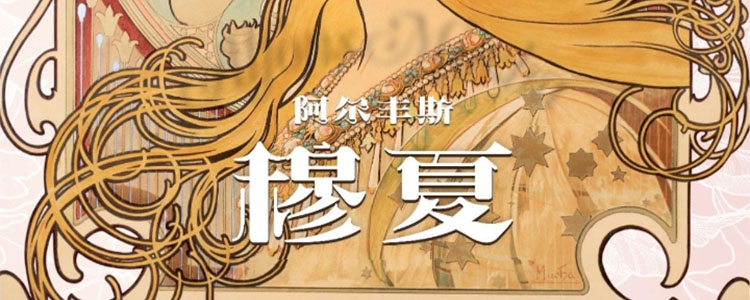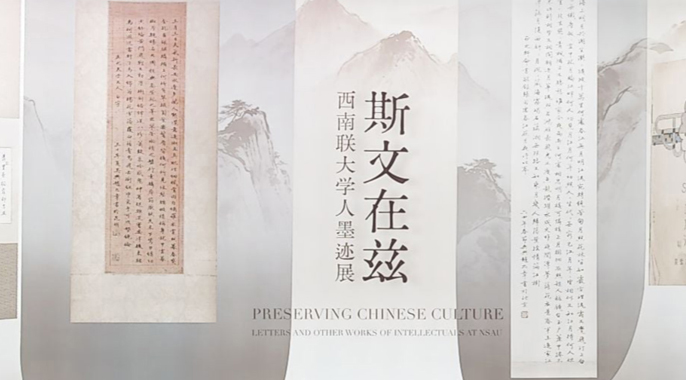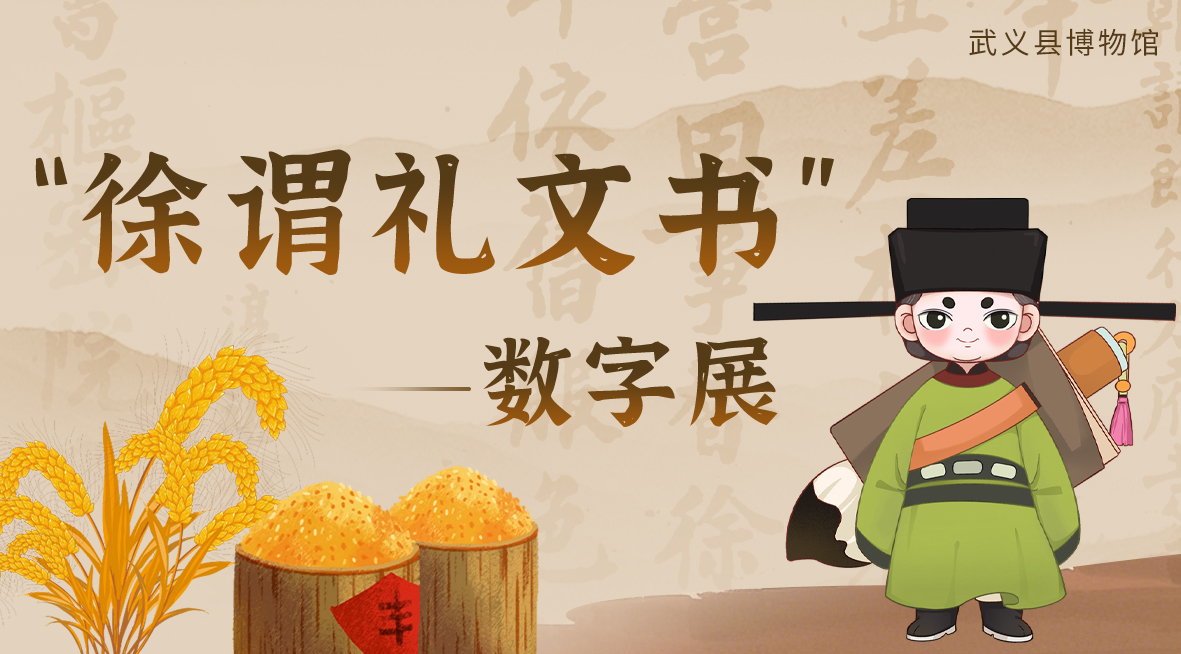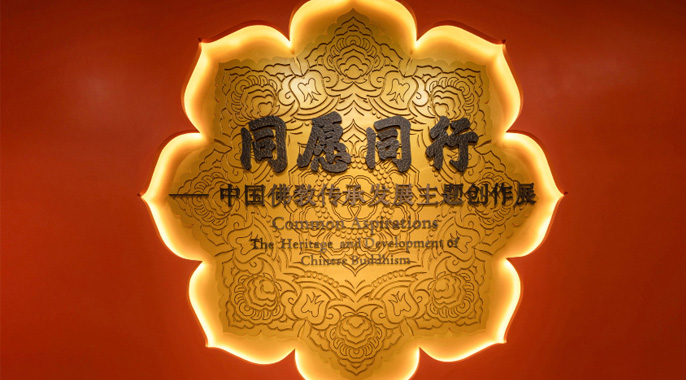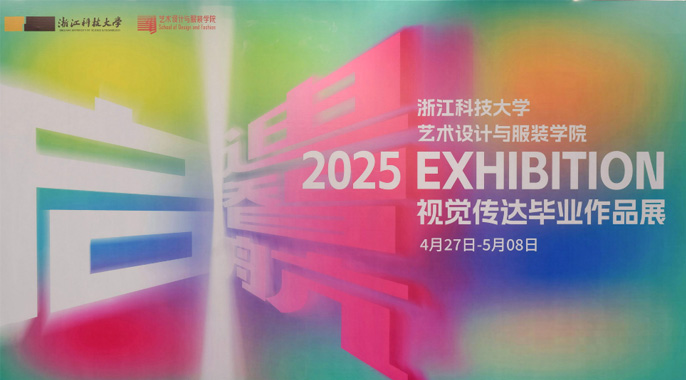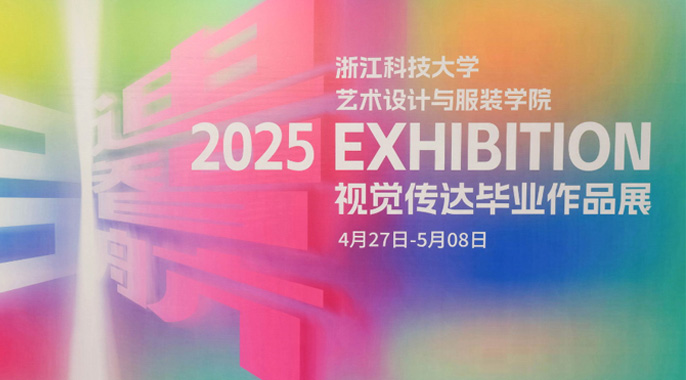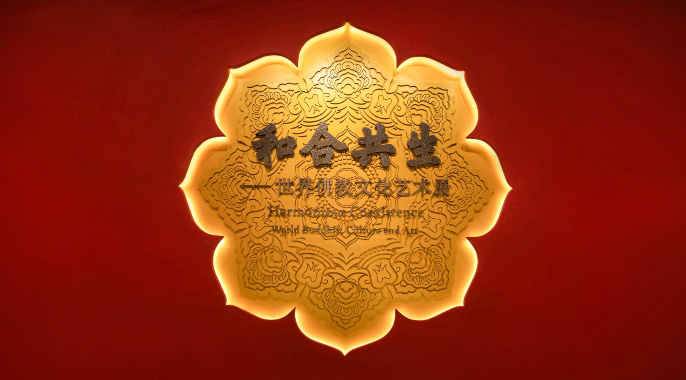
张秋实:“从传统中汲取养分”
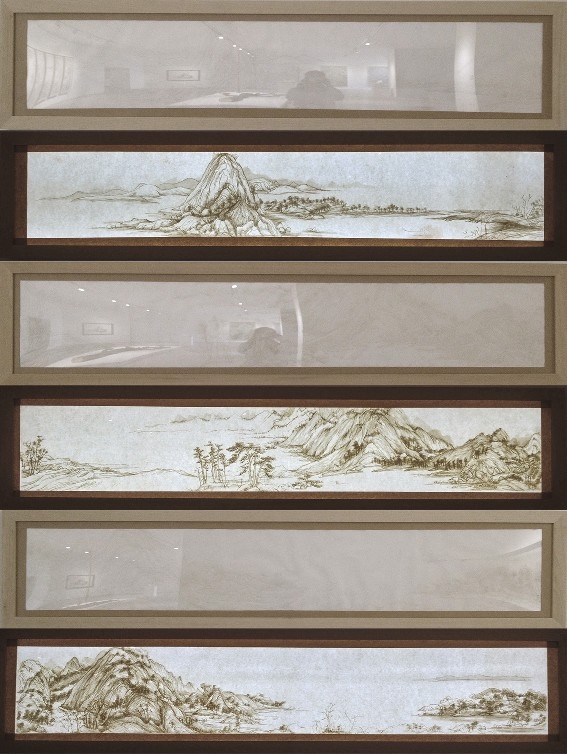
1.组合《一纸云山-富春山居图》
A piece of paper-landscape- Fuchun Mountains
50x210 cmx3,2013-17
2.《一纸云山-富春山居图》
环境图1
3.《一纸云山-富春山居图》
环境图2
4.《一纸云山-富春山居图》
局部1
5.《一纸云山-富春山居图》
局部2
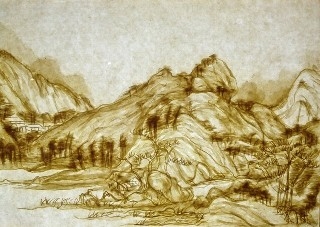
6.《一纸云山-富春山居图》
局部3
作品阐释:
在传统的中国绘画中,焦、浓、重、淡、清犹如青、赤、黄、白、黑,画家仅需水墨便可将大千世界绘于一隅,“墨分五色”成为了“随类赋彩”的主要依据。自现代主义之后,艺术作品转而进行象征性寓意的表现,材质、媒介成为了传递观念的载体。而纸质媒材作为承载着文本符号和形式的“物”,已成为主体和客体的一道中介,传递方式也由信息化向物质化延续着。
作品从纸所能够承载的材性、样态和信息入手,用宣纸来进行“墨”的表述,光线的作用导致叠加的宣纸呈现出“浓淡干湿”的造型效果,为观者提供了解读中国画的另一条路径,透射出一种新的存在,构建了一面新的延续性、可读性和可视性。这种反思与重构的方式正如克莱门特格林伯格所言,“使用一门学科的独特方法来批判这门学科自身——不是为了颠覆它,而是为了更牢固地确立于其专门领域。”
Interpretation of Work:
In Chinese traditional painting, the ink of 5 thickness levels represents 5 colors. As a result, with only ink, the painters can demonstrate the whole world on one painting. The ink of 5 thickness levels becomes the main base for the “coloring the objects the way it is”. After modernism, art work has turned to express the symbolic concept, using material and media as its carrier. And paper, as an object carrying text symbols and forms, has become an inter-medium between subject and object. The way of transferring also switched from information to material.
Based on the characteristic, form and information of paper, the work here uses rice paper as “ink” to illustrate. With the back light, the overlaying paper demonstrates the effect of ink of different thickness levels. A new way to understand the Chinese traditional painting is offered before the audiences with new continuance, new readability and visibility. This way of reflection and reconstruction is, as Clement Greenberg said, “in the use of the characteristic methods of a discipline to criticize the discipline itself, not in order to subvert it, but to entrench it more firmly in its area of competence.”
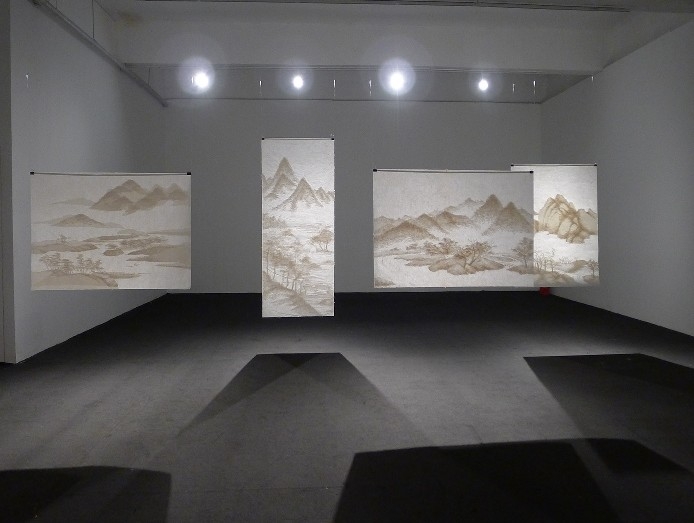
7.《一纸云山》系列
环境图1
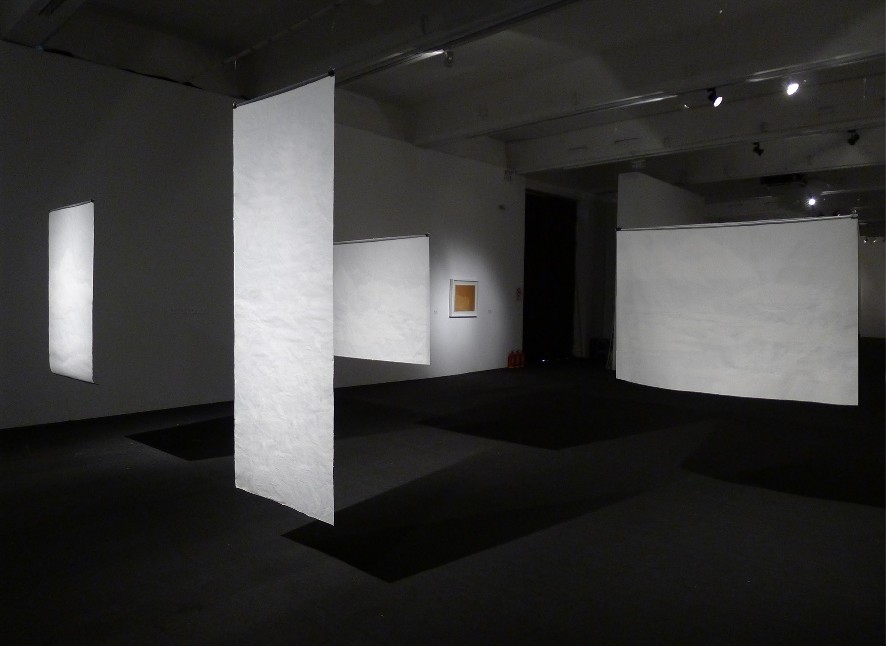
8.《一纸云山》系列
环境图2
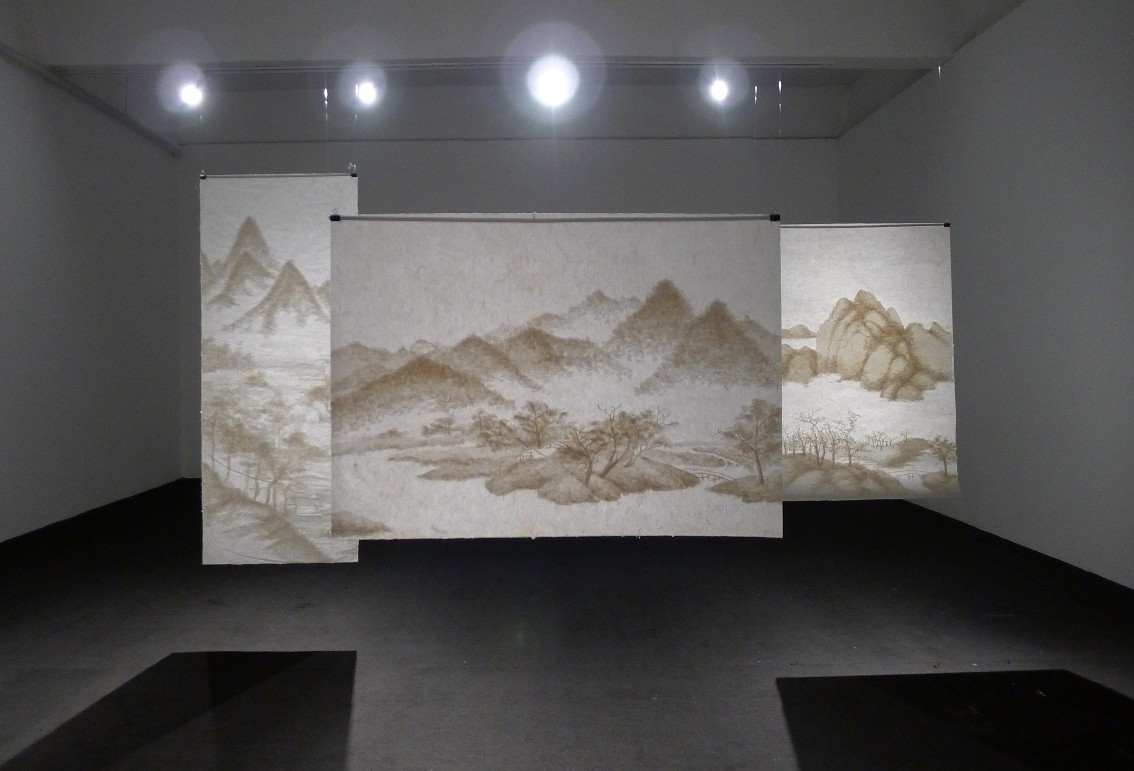
9.《一纸云山》系列
环境图3
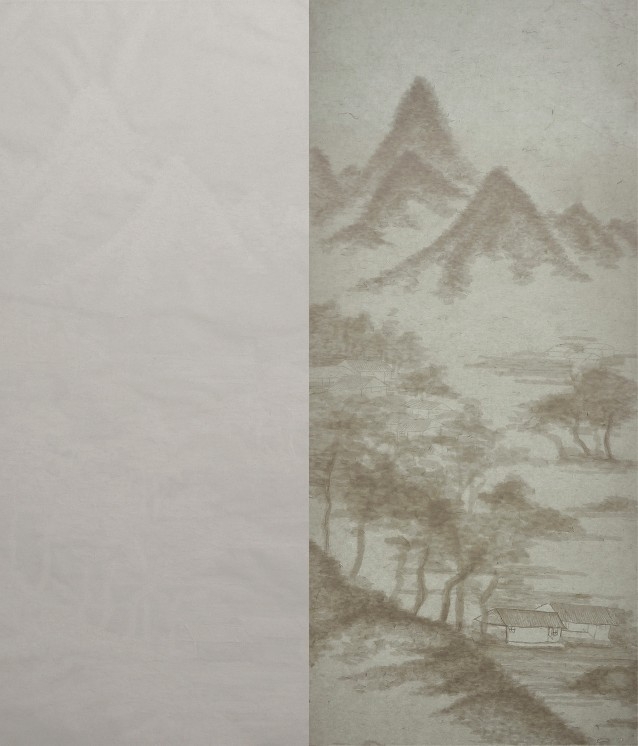
10.《一纸云山-米式云山2》
灯箱装置Lightbox installation 88.5x218.5cm 2012
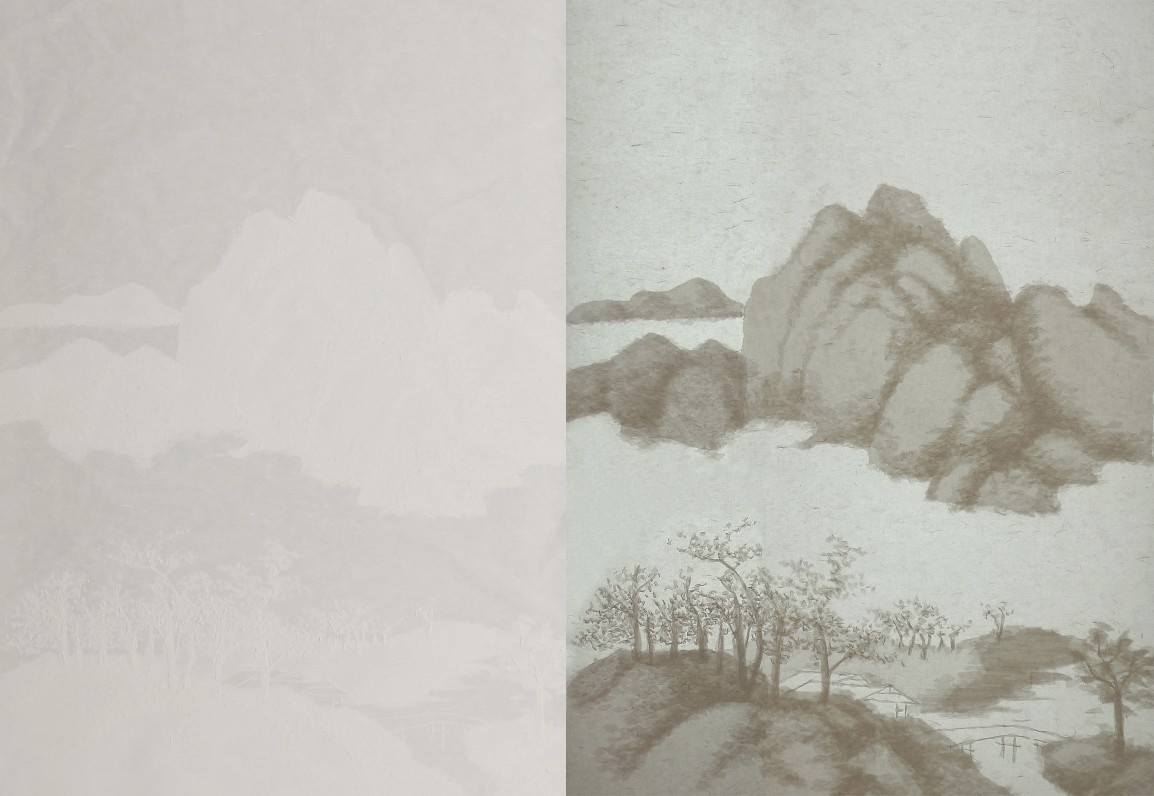
11.《一纸云山-米式云山3》
灯箱装置Lightbox installation 105x149cm 2012
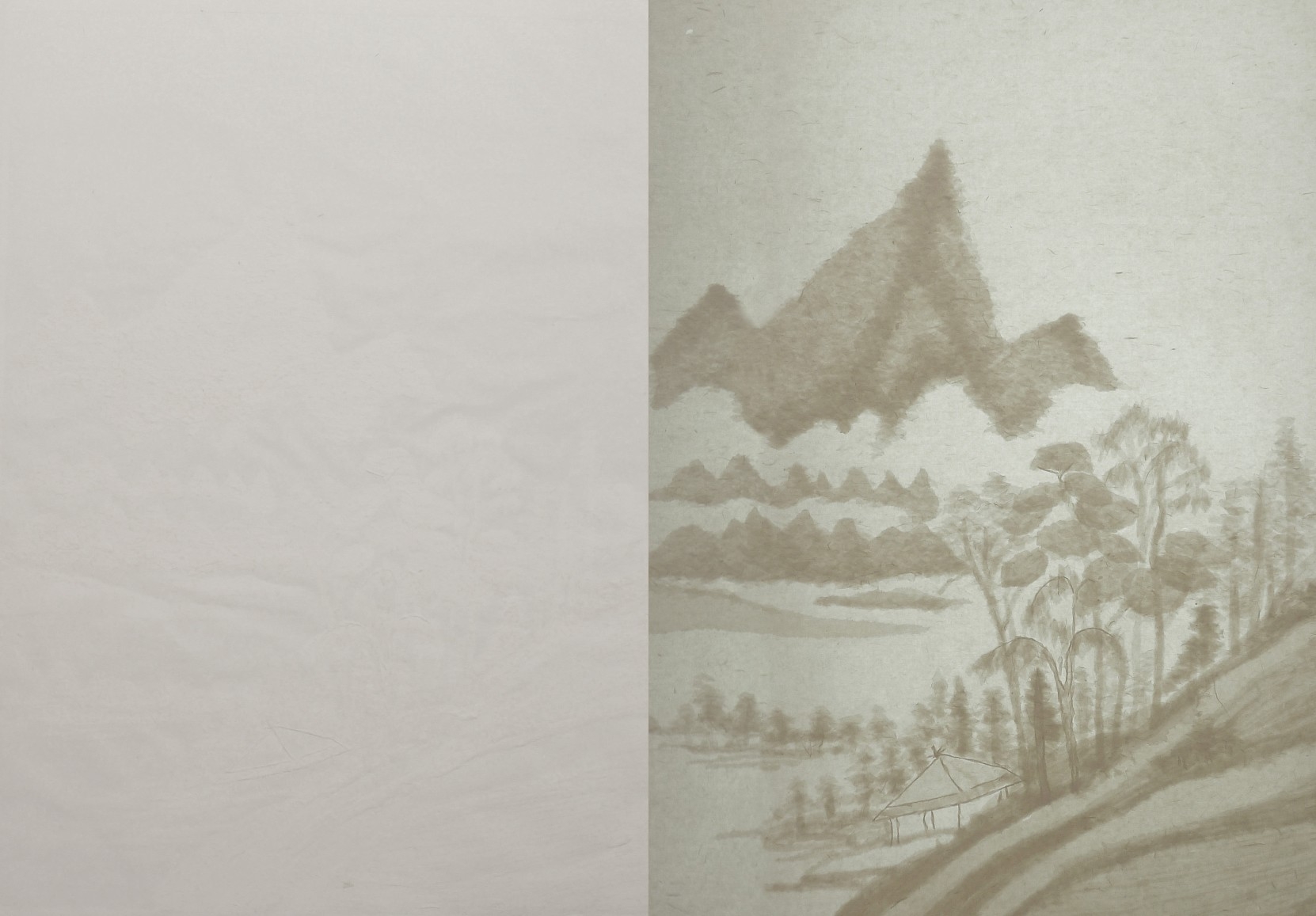
12.《一纸云山-米式云山4》
灯箱装置Lightbox installation 105x149cm 2012
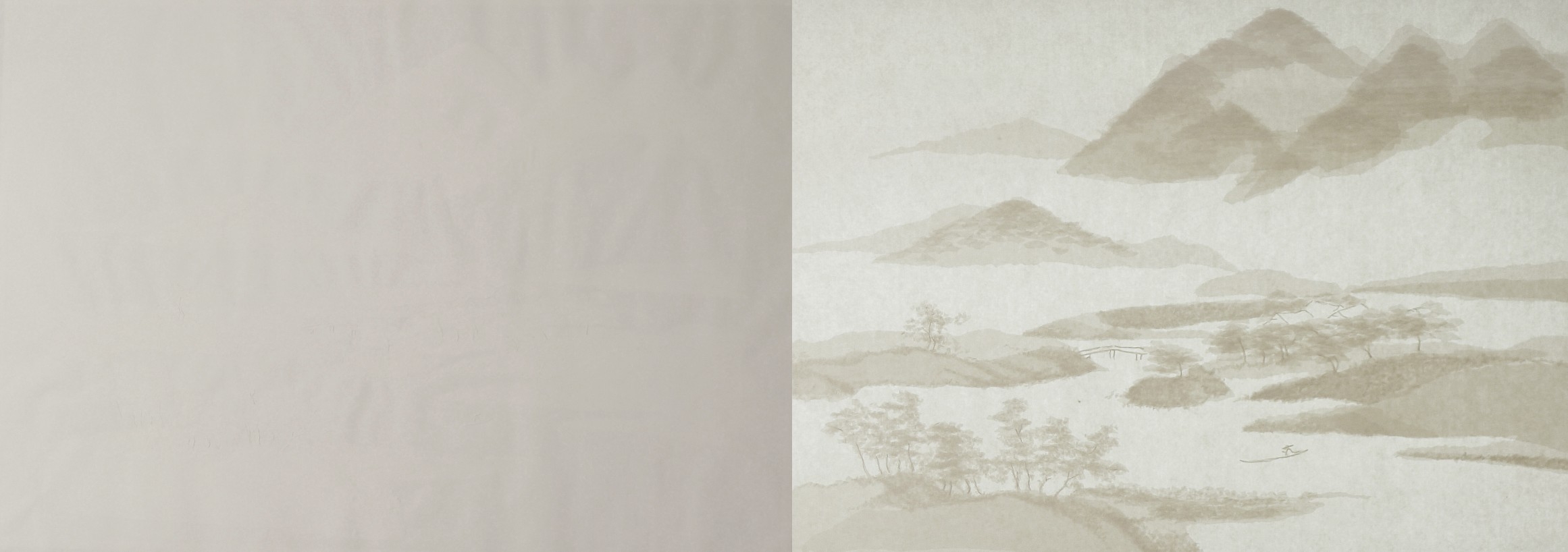
13.《一纸云山-米式云山5》
灯箱装置Lightbox installation 149x105cm 2012
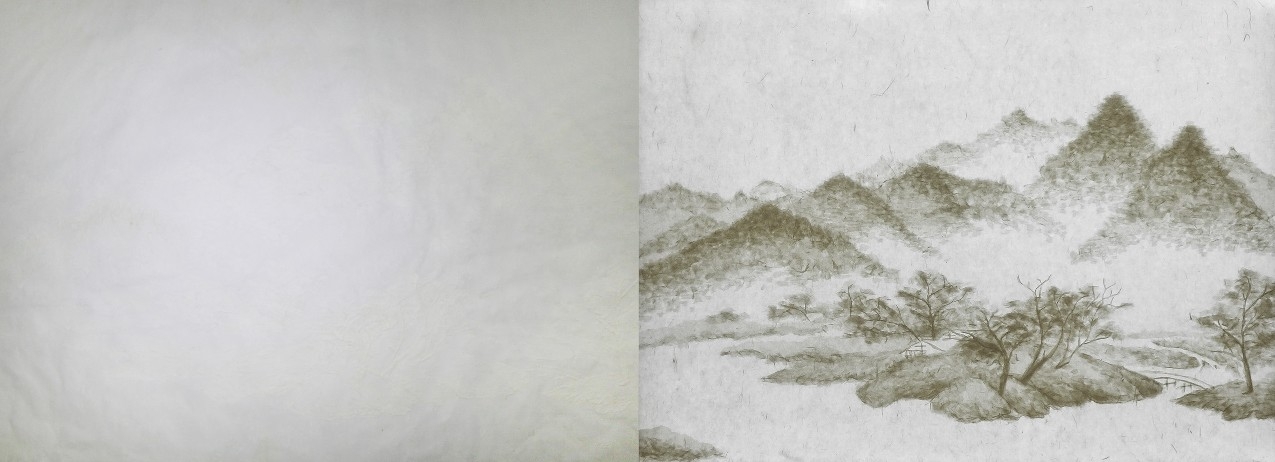
14.《一纸云山-米式云山10》
灯箱装置Lightbox installation 149x105cm 2012

15.《叠山-1》
44.5×210cm 宣纸、led灯箱,2015

16.《叠山-2》
44.5×210cm 宣纸、led灯箱,2015

17.《叠山-3》
44.5×210cm 宣纸、led灯箱,2015

18.《叠山-4》
44.5×210cm 宣纸、led灯箱,2015
作品阐释:
叠山理水是中国造园最基本的手法,随形就势,削低垫高,引水成池,筑土为山,使得园林景致山美如画,水秀如诗。叠山理水创造的山水景观往往可以再现大自然的靓丽风采,成为园林中的主景或形象标志。游人走入园林中,恍如置身巍峨的群山峻岭当中,美不胜收,令人瞩目。自现代主义之后,艺术作品转而进行象征性寓意的表现,材质、媒介成为了传递观念的载体。而纸质媒材作为承载着文本符号和形式的“物”,已成为主体和客体的一道中介,传递方式也由信息化向物质化延续着。
作品从宣纸所能够承载的材性、样态和信息入手,用宣纸来进行“山石”的表述,光线的作用导致叠加的宣纸呈现出“皴擦渲染”的造型效果,为观者提供了视觉方式的另一条路径,透射出一种新的存在,构建了一面新的延续性、可读性和可视性。这种反思与重构的方式正如克莱门特格林伯格所言,“使用一门学科的独特方法来批判这门学科自身——不是为了颠覆它,而是为了更牢固地确立于其专门领域。”
Piling up mountains and waters is the most basic technique in Chinese gardening. With the techniques of following the geographical circumstances, lowering the high and elevating the low, drawing waters to make pools and heaping up sands to make mountains, Chinese gardens always get picturesque views and poetic scenic sights. Landscapes based on piled up mountains and waters, in most cases, represent the beautiful sceneries of nature and turn to be the main feature or iconic identification of gardens, upon walking into which the visitors would feel as if they were in lofty hills and steep mountains. The whole scenery is just so attractive and impressive. After modernism, art work has turned to express the symbolic concept, using material and media as its carrier. And paper, as an object carrying text symbols and forms, has become an inter-medium between subject and object. The way of transferring also switched from information to material.
Based on the characteristic, form and information of paper, the work here uses rice paper as “ink” to illustrate. With the back light, the overlaying paper demonstrates the effect of ink of different thickness levels. A new way to understand the Chinese traditional painting is offered before the audiences with new continuance, new readability and visibility. This way of reflection and reconstruction is, as Clement Greenberg said, “in the use of the characteristic methods of a discipline to criticize the discipline itself, not in order to subvert it, but to entrench it more firmly in its area of competence.”
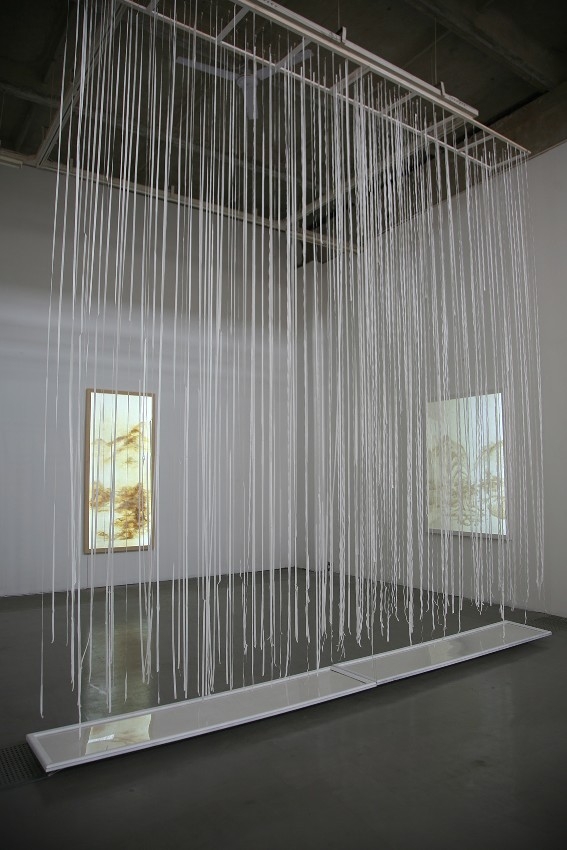
19.《心如纸水》
54X200cm,纸、LED灯箱,2013
20.《心如纸水》
54X200cm,纸、LED灯箱,2013JPG
作品阐释:
老子在《道德经》第八章中如是说,“上善若水,水善利万物而不争,处众人之所恶,故几于道。”可见,老子认为水的品性就是所谓的“道”。“水,润物无声,无相无形”。水一直在中国传统文化中暗含着多重的寓意,水能承载万物,同时也被看成是君子品行的最佳写照。而工艺出自中国的宣纸也被众多文人墨客作为书画的载体,创造出了精美的艺术作品。
纸和水这二者本无天然的联系,它们在各自的领域承载着不同的文化内涵。在这个作品中,作者将宣纸撕、扯之后层层叠加并粘贴起来,由于宣纸的透光性而呈现出了水滴涟漪的效果。细长纸条仿佛从天而降的水滴,与之相对应的LED灯箱中则充满了“涟漪”,忽明忽暗的灯箱又呈现了宣纸的本来面目。仅一明一暗、一隐一现便将这两个材质巧妙的结合起来,在利用材质属性的同时也将心境灵感展露无疑。
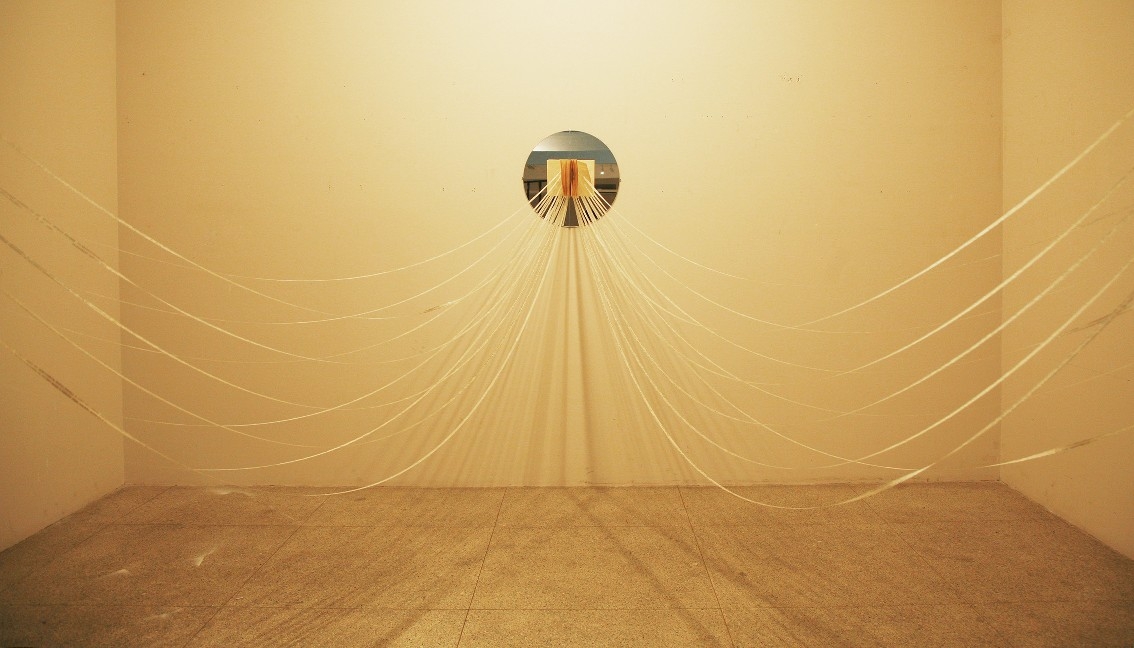
21.《语文-3》
Language and Literature-3 印刷品、胶带 2011
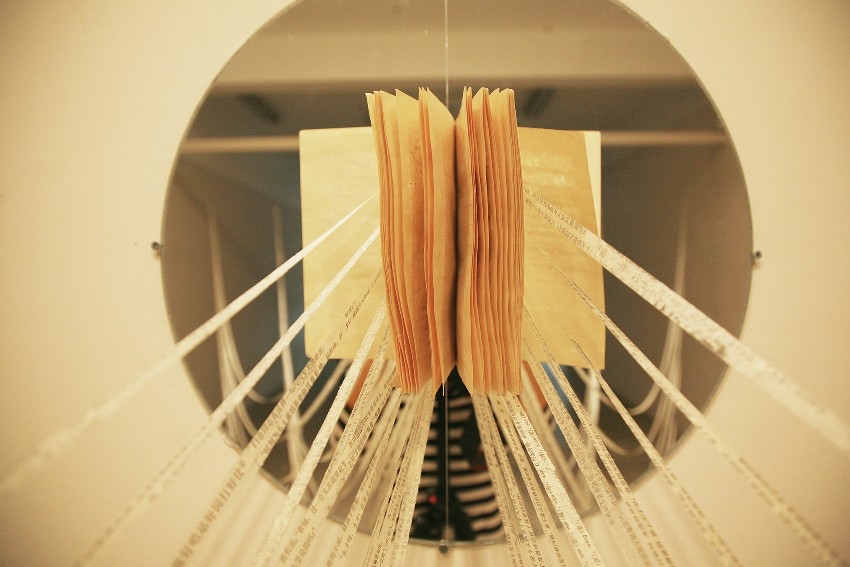
22.《语文-4》
Language and Literature-4 印刷品、胶带 2011
《教科书——语文》&《教科书——常识》
作品阐释:
教育是教育者根据一定社会(或阶级)的要求,有目的、有计划、有组织地对受教育者的身心施加的影响,把他们培养成一定社会(或阶级)所需要的人的活动。教科书则承担着教育人德行、规范人言行的使命,不同时代的教科书无不带有社会的烙印。在一次次对教科书进行改版的同时,有些被保留,有些则被去除,这些都形成了一代代人的记忆渗透在他们的成长中。
作品用1972年北京市第一版中学生教材为对象,用透明胶带将书中的所有内容(封皮封底除外)都粘掉,在完成“去除”这一动作的同时,胶带从书中被扯出,这本培养人们文学素养的教科书也变成了完全“空白”的书。而被扯出的胶带上虽然带有书中的内容,但却被打乱又重新组合成了新的信息。在那个特定的历史时期内,人们如何看待知识和教育?这些问题可能只有不处于那个时代的人才能解读。
Textbook─Chinese & Textbook─Common sense
Work Introduction:
By education, which is based on the requirement of a certain society (or class), we mean a list of activities, aiming at training educatees to be the needed ones, in the form of the physical and mental influences on educatees exerted intentionally and strategically by educators. In the course of education, textbooks burdens the mission of educating and standardizing educatees’ virtues and behaviors. Textbooks of various periods bear different marks of society. In the edition correction process, some texts are reserved, others substituted. The reserved texts shape the memories of generations which penetrate in their growth.
Using the 1st edition of middle school textbook of Beijing in 1972 as the target, this book deletes all the content (except the covers) with tapes. In “deletion” process, each character is extracted from pages, leaving the whole textbook designed to cultivate the students’ humanistic quality a totally “blank” one. Original characters as those consumed tapes contain, new information has been produced. The answer of how people then liked knowledge and education in that particular historical period may only be in the mind of those not living in that period.
23.《常识》
印刷品 胶带 尺寸可变,2013-2
24.《常识》
印刷品 胶带, 尺寸可变 2013 -1
《教科书——常识》
作品阐释:
教育是教育者根据一定社会(或阶级)的要求,有目的、有计划、有组织地对受教育者的身心施加的影响,把他们培养成一定社会(或阶级)所需要的人的活动。教科书则承担着教育人德行、规范人言行的使命,不同时代的教科书无不带有社会的烙印。在一次次对教科书进行改版的同时,有些被保留,有些则被去除,这些都形成了一代代人的记忆渗透在他们的成长中。
作品用1972年北京市第一版中学生教材为对象,用透明胶带将书中的所有内容(封皮封底除外)都粘掉,在完成“去除”这一动作的同时,胶带从书中被扯出,这本培养人们文学素养的教科书也变成了完全“空白”的书。而被扯出的胶带上虽然带有书中的内容,但却被打乱又重新组合成了新的信息。在那个特定的历史时期内,人们如何看待知识和教育?这些问题可能只有不处于那个时代的人才能解读。
Textbook─Common sense
Work Introduction:
By education, which is based on the requirement of a certain society (or class), we mean a list of activities, aiming at training educatees to be the needed ones, in the form of the physical and mental influences on educatees exerted intentionally and strategically by educators. In the course of education, textbooks burdens the mission of educating and standardizing educatees’ virtues and behaviors. Textbooks of various periods bear different marks of society. In the edition correction process, some texts are reserved, others substituted. The reserved texts shape the memories of generations which penetrate in their growth.
Using the 1st edition of middle school textbook of Beijing in 1972 as the target, this book deletes all the content (except the covers) with tapes. In “deletion” process, each character is extracted from pages, leaving the whole textbook designed to cultivate the students’ humanistic quality a totally “blank” one. Original characters as those consumed tapes contain, new information has been produced. The answer of how people then liked knowledge and education in that particular historical period may only be in the mind of those not living in that period.
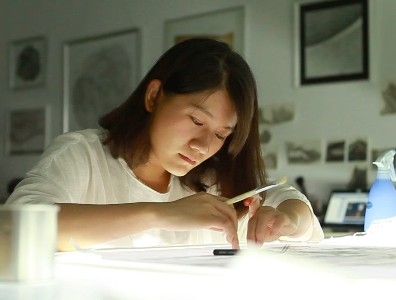

张秋实
张秋实,女,1986年生于河南开封。
2005年西安美术学院版画系
2010年中央美术学院实验艺术系
2012年法国里昂国立美术学院
参展:
2015 锵锵2015-女性艺术家联展 上海狮语画廊
2015 Black&Light东亚西亚美术展 韩国光州
2015 第二届斯洛文尼亚文化艺术节 卢布尔雅那
2015 “装”韩国艺美基金会 中国北京
2015 韩国光州市立美术馆驻留艺术家群展 上海证大当代艺术空间
2014 韩国光州市海瓦画廊艺术展 韩国光州
2014 第二届中国意大利当代艺术双年展 中国北京
2014 第二届v时代青年当代艺术展 北京树美术馆
2014 “意象”水墨展 山东美术馆
2014 纸.在——2013—2014艺术跨年展 天津美术馆
2013 新风景Ⅱ青年艺术家群展 北京季节画廊
2013 “墨侧高深”当代空间水墨展 北京当代艺术馆
2013 “界”中央美术学院导师工作室作品展 北京铸造美术馆
2013 中央美术学院研究生毕业展 中央美术学院美术馆
2013 “艺术8中国奖” 北京艺术8
2013 “没有天空的城市”青年当代艺术展 北京元典美术馆
2013 “锲体”青年艺术家联展 北京绥风艺术馆
2013 “意象”上海喜玛拉雅美术馆开馆展 中国上海
2013 “山水异境” 北京红门画廊
2012 “臆象自造”艺术家群展 北京静艺空间
2012 首届意大利-中国双年展 意大利米兰蒙扎
2011 中央美术学院实验艺术系开门展第二回 中央美术学院
2011 耦偶合盒——青年艺术家群展 北京南街8号艺术区
2010 塑造感官——艺术家群展 北京三里屯babu泛视觉空间
Zhang Qiushi
Born in Kaifeng, Henan,1986
Education:
2005 Bachelor degree of Xi'an Academy of Fine Arts
2010 Master degree of the Central Academy of Fine Arts
2012 ENSBA Lyon
Works & Exhibitions:
2015 Soft Power 2015 - A female artists group exhibition,Leo Gallery
2015 Black&Light East Asia Art Exhibition, Korea Gwangju
2015 The second Slovenia culture and Art Festival,Ljubljana
2015 WITH Korea Artmia,Beijing , China
2015 Gwangju Museum of Art Resident Artists Group Show,Shanghai
2014 Korea Gwangju Haiwa Gallery exhibition, Korea Gwangju
2014 The 2th Italy- China Contemporary Art Biennale, Beijing , China
2014 The Second v era youth Contemporary Art Tree Museum
2014 Imagery Chinese Ink exhibiton, Shandong Museum
2014 Paper·Being 2013 –2014 cross year art exhibition Tianjin Museum
2013 New Scape II Beijing Art Seasons Gallery
2013 “A New Ink Spirit: Exhibition of Contemporary Space Ink” The Museum of Contemporary Art Beijing (MoCA Beijing)
2013 "Boundary" Central Academy of Fine Arts Exhibition, Beijing Found mesuem
2013 Central Academy of Fine Arts graduate exhibition, CAFA Art Museum
2013 "Art 8 China Award", Beijing Art 8
2013 "There is no sky city" Young Contemporary Art exhibition, Beijing Yuandian Museum
2013 "Wedge body" Young Artists Exhibition, Beijing Sui Wind Museum
2013 Image of Shanghai Himalayas Art Museum Opening Exhibition , Shanghai China
2013 “Landscape from Habitat” ,Red Gate Gallery, Beijing
2012 “Thinking&Imaging” Artists Exhibition, JingYi Space,Beijing.
2012 The first Italy- China Biennale,Milan, Italy
2011 The second open exhibition of experimental art department, Central Academy of Fine Arts.
2011 Young Artists Exhibition, No. 8, South Street Art District, Beijing.
2010 Shaping the senses - Group Exhibition, Sanlitun babu pan-visual space,Beijing.

